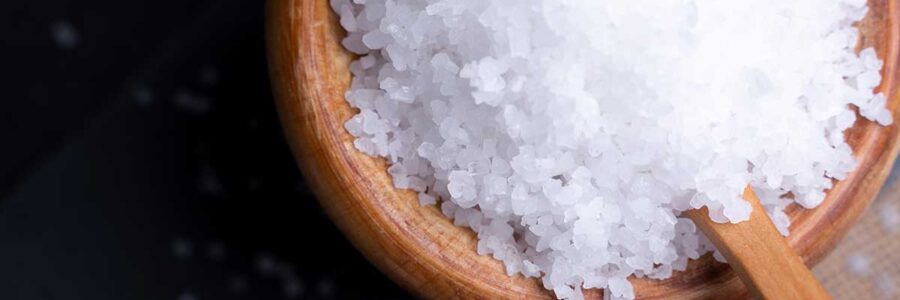Sea salt is often marketed as a healthier and more natural alternative to regular table salt, prized for its mineral content and robust flavor. However, recent studies have revealed a troubling reality: many popular sea salt brands contain significant levels of lead, a toxic heavy metal that can pose serious health risks. This revelation is particularly concerning given the widespread use of sea salt in cooking and seasoning.
In this detailed blog post, we’ll explore lead contamination in sea salt, highlight specific brands that contain high levels of this toxin, and provide practical advice on choosing safer options for your household.
The Health Risks of Lead Exposure
Lead is a potent neurotoxin with no safe level of exposure. Even low levels of lead can harm health, particularly when exposure occurs over an extended period. Some of the key health risks associated with lead include:
- Neurological Damage: Lead can impair cognitive function, leading to problems with memory, attention, and learning. Children are particularly vulnerable, but adults are also at risk.[1]
- Heart Health: Prolonged lead exposure has been linked to increased blood pressure and a higher risk of cardiovascular diseases.
- Kidney Issues: Lead accumulates in the kidneys, where it can cause chronic damage and impair renal function over time.[2]
- Reproductive Concerns: Lead exposure can affect reproductive health, including fertility issues and complications during pregnancy.[3]
Given that lead can accumulate in the body over time, regular consumption of lead-contaminated sea salt could lead to significant health issues, making it crucial to choose your salt carefully.
Lead Levels in Popular Sea Salt Brands: What the Studies Show
A recent study by Mamavation, an investigative platform focused on environmental toxins, tested several popular sea salt brands for lead content. The results were alarming, revealing that many commonly used sea salts contain lead levels that can easily exceed safe consumption limits with regular use.[4]
Celtic Sea Salt: One of the most concerning findings was with Celtic Sea Salt, a brand often praised for its natural properties. The study found that this salt contains approximately 650 parts per billion (ppb) of lead. To put this into perspective, consuming just two pinches of this salt (around 0.8 grams) could exceed the daily lead exposure limit set by California’s Proposition 65, which is 0.5 micrograms per day.
Redmond’s Sea Salt: Another popular brand, Redmond’s Sea Salt, contained around 139 ppb of lead. While this is lower than Celtic Sea Salt, it still poses a risk, especially for those who use this salt frequently.
Baja Gold Sea Salt: Baja Gold Sea Salt, favored by many health-conscious consumers, was found to have a lead content of 338 ppb. At this level, consuming just four pinches per day could result in lead exposure above the safe limit.
These findings highlight the importance of being selective about the sea salt you use, as regular consumption of these contaminated products could lead to significant health risks.
How to Choose a Safer Sea Salt
To minimize your exposure to lead in sea salt, it’s essential to take the following steps:
- Research Brands Carefully:
- Before buying sea salt, research the brand’s lead content. Aim for products with lead levels below 50 ppb, considered a safer threshold for regular consumption.
- Opt for Low-Lead or Lead-Free Alternatives:
- Some sea salt brands are significantly lower in lead or even lead-free. For example, Sal Marina Sea Salt has been tested and found to contain only 20 ppb of lead, making it a much safer option. Additionally, this brand is free from microplastics, a common contaminant in sea salts.
- Limit Your Salt Intake:
- If you’re using a sea salt with higher lead levels, consider reducing your overall salt intake or switching to a safer brand for daily use.
- Diversify Your Seasoning Choices:
- Incorporate a variety of herbs, spices, and other natural seasonings into your cooking to reduce your reliance on sea salt. This can help lower your overall exposure to potential contaminants.
- Stay Informed:
- Follow food safety standards and recommendations, such as those provided by Proposition 65, to ensure you’re making safe choices for your family.
Conclusion: The Importance of Safe Sea Salt Choices
The discovery that many popular sea salt brands contain harmful lead levels is a significant concern for anyone focused on maintaining a healthy diet. Lead is a dangerous toxin with no safe level of exposure, and regular consumption of contaminated sea salt can pose serious health risks over time.
By staying informed about the lead content in your sea salt and choosing safer alternatives, you can protect yourself and your family from these hidden dangers. Always opt for brands.
References:
- Sanders, Talia, et al. “Neurotoxic Effects and Biomarkers of Lead Exposure: A Review.” Reviews on Environmental Health, vol. 24, no. 1, 2009, pp. 15–45. PubMed Central.
- Vaidya, Satyanarayana R., and Narothama R. Aeddula. “Chronic Kidney Disease.” StatPearls, StatPearls Publishing, 2024. PubMed.
- Kumar, Sunil. “Occupational and Environmental Exposure to Lead and Reproductive Health Impairment: An Overview.” Indian Journal of Occupational and Environmental Medicine, vol. 22, no. 3, 2018, pp. 128–37. PubMed Central.
- Segedie, Leah. “Sea Salt & Himalayan Salt Tested For Heavy Metals Like Lead & Microplastics — Guide.” MAMAVATION, 12 Dec. 2023, https://www.mamavation.com/food/sea-salt-himalayan-salt-heavy-metals-lead.html.


